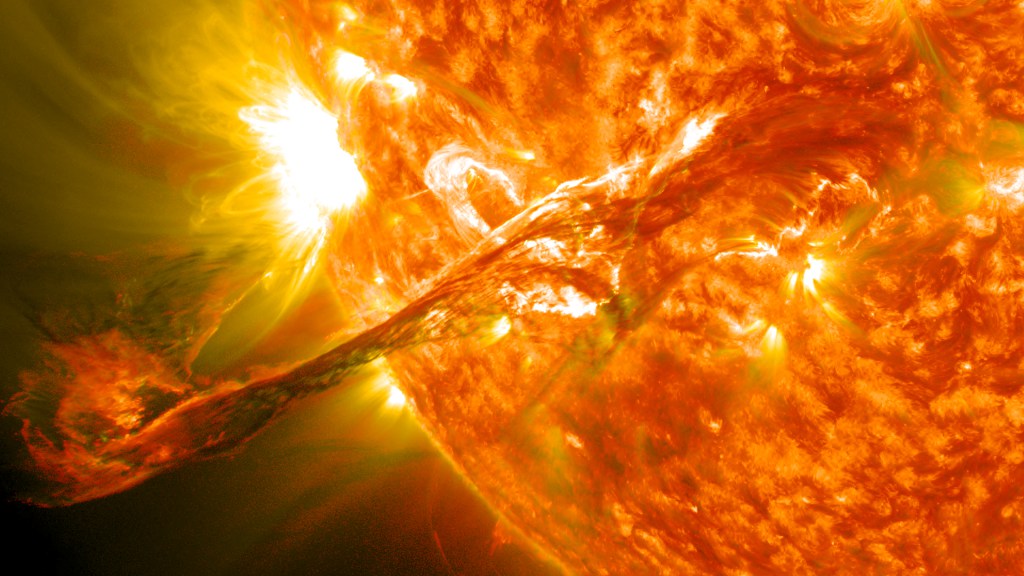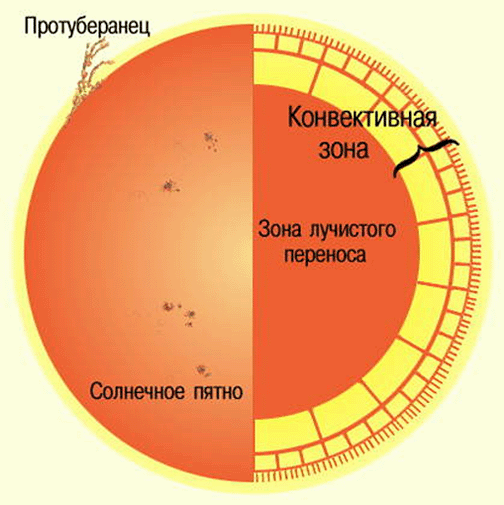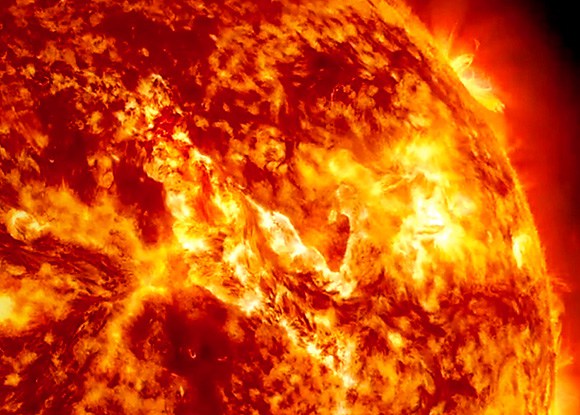
There is one reason why earth is the only place in the Solar system where it exists and prospers life. Of course, scientists suspect that under the icy surface of Europa or Enceladus may also exist even microbial or aquatic life form, it can also be found in the methane lakes of Titan. But from time to time the Earth remains the only place that has all the necessary conditions for the existence of life.
One reason for this is that the Land is located in a potentially habitable zone around the Sun (the so-called “Goldilocks zone”). This means that it is in the right place (not too far and not too close) to get the abundant Solar energy, which includes light and heat required for chemical reactions. But how the Sun provides us with energy? What stages comprise the energy towards us, on planet Earth?
The answer begins with the fact that the Sun, like all stars, can produce energy, because it is essentially a massive fusion reactor. Scientists believe that it began with a huge cloud of gas and particles (i.e., nebulae), which collapsible under gravity is called the theory of the nebula. This process was born not only a great ball of light in the center of our Solar system and the hydrogen collected at the center, began to be synthesized with the formation of solar energy.
Technically known as nuclear fusion, this process releases huge amounts of energy in the form of heat and light. But on the way from the center of the Sun to the planet Earth, this energy passes through several important stages. In the end, it all comes down to the layers of the Sun, and the role each of them plays an important role in the process of securing our planet’s vital life-energy.
The core
The core of the Sun is the area that extends from center to about 20-25% of the radius of the star. Here, in the core, energy is produced, generated by conversion of hydrogen atoms (H) in the molecule of helium (He). This is possible due to the immense pressure and high temperatures inherent in the core, which is estimated equivalent to 250 billion atmospheres (25,33 trillion kPa) and 15.7 million degrees Celsius, respectively.
The end result is the fusion of four protons (hydrogen molecules) in one alpha particle — two protons and two neutrons, linked together into a particle identical to a helium nucleus. In this process, released two positron and two neutrinos (which changes two of the protons into neutrons), and energy.
The core is the only part of the Sun that produces a significant amount of heat during the synthesis process. In fact, 99% of the energy produced by the Sun, contains in the range of 24% of the radius of the Sun. To 30% of the radius of synthesis is almost entirely ceases. The rest of the Sun is heated by energy that is transferred from the core through successive layers, eventually reaching the solar photosphere and Utaka in space in the form of sunlight or kinetic energy of particles.
The sun releases energy by converting mass into energy at the speed of 4.26 million metric tons per second, equivalent to septillion 38,460 watt per second. So that you can understand, this is equivalent to explosions 1 820 000 000 “Tsar bomb” — the most powerful thermonuclear bomb in history of mankind.
Area radiation transfer
This area is located right after the kernel and extends 0.7 solar radius. In this layer there is no convection of heat, but solar matter is very hot and dense enough that thermal radiation is easily passed intense heat from the core outwards. It includes mainly ions of hydrogen and helium emitting photons, which are short distance and are absorbed by other ions.

The temperature of this layer is lower, from about 7 million degrees closer to the core to 2 million degrees on the border of the convective zone. The density also drops a hundred times from 20 g/cm3 is closer to the core up to 0.2 g/cm3 at the upper boundary.
Convective zone
This is the outer layer of the Sun, which accounts for all that is beyond 70% of the radius of the Sun (and out of about 200 000 km below the surface). Here the temperature is lower than in the radiative zone and heavier atoms are not fully ionized. Radiation heat transfer is less efficient, and the plasma density is sufficiently low to allow a convective flow.
Because of this rising heat cells carry most of the heat outward to the photosphere of the Sun. After tog, as these cells rise podosferikos just below the surface, the material is cooled and density increases. This leads to the fact that they descend to the base of the convective zone is again — where taking more heat and continue the cycle of convection.
On the Sun’s surface temperature drops to about 5700 degrees Celsius. The turbulent convection of this layer of the Sun also causes an effect that produces magnetic North and South poles all over the surface of the Sun.
It is in this layer also appear as sunspots, which look dark compared with the surrounding area. These spots correspond to concentrations of magnetic field fluxes that are convection and lead to a drop in temperature on the surface compared with the surrounding material.
The photosphere
Finally, there is the photosphere, the visible surface of the Sun. It is here that solar light and heat are radiated and brought to the surface, are distributed in space. Temperature in this layer varies between 4500 and 6000 degrees. Since the upper part of the lower photosphere is colder, the Sun seems brighter in the center and darker on the sides: this phenomenon is known as limb darkening.

The thickness of the photosphere is hundreds of kilometers, in this region, the Sun becomes opaque to visible light. The reason for this is to reduce the amount of negatively charged hydrogen ions (H-), which can easily absorb visible light. Conversely, the visible light we see, is born in the process of the reaction of electrons with hydrogen atoms to form ions H-.
Energy emitted by the photosphere, is distributed in space and reaches the Earth’s atmosphere and other planets in the Solar system. Here on Earth, the upper atmosphere (the ozone layer) filters most ultraviolet radiation from the Sun, but omits the part on the surface. Then this energy is absorbed by the air and the crust of the earth, warms our planet and provides the organisms source of energy.
The sun is at the centre of biological and chemical processes on Earth. Without it the life cycle of plants and animals would have ended, the circadian rhythms of every creature would be eliminated, and life on Earth would cease to exist. The importance of the Sun was recognized even in prehistoric times, many cultures regarded it as a deity (and often placed as the chief deity in their Pantheon).
However, only in the last few centuries we have begun to understand the processes that fuel the Sun. Thanks to constant research of physicists, astronomers and biologists, we can now understand how the Sun produces energy and how it passes through our Solar system. The study of the known Universe with its diversity of star systems and extrasolar planets also helps us to draw an analogy with other types of stars.
